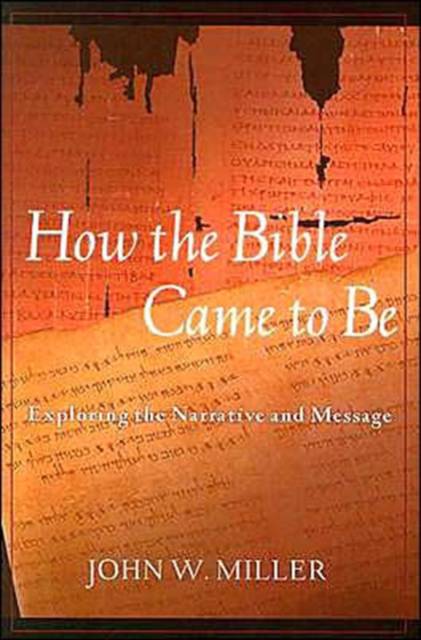
- Afhalen na 1 uur in een winkel met voorraad
- Gratis thuislevering in België vanaf € 30
- Ruim aanbod met 7 miljoen producten
- Afhalen na 1 uur in een winkel met voorraad
- Gratis thuislevering in België vanaf € 30
- Ruim aanbod met 7 miljoen producten
Zoeken
€ 18,45
+ 36 punten
Omschrijving
The Bible comprises a large array of books, teachings, and stories woven into a longer narrative that opens with creation and ends with a vision of creation renewed. Although it is the best selling book in history, and notwithstanding its vast popularity and importance, very few of its readers have any idea who actually wrote its various segments or how they came to be assembled into the sacred work we know today. Moreover, history has shown that it can be wrongly interpreted with devastating consequences. In HOW THE BIBLE CAME TO BE, John W. Miller has written the first detailed study of the form and message of the Bible as a whole, along with carefully documented information on how, when, and why its diverse components were assembled. His pathbreaking work puts readers in touch, for the first time, with the intent and goals of those who created this large body of sacred scriptures. Taken together, the information in HOW THE BIBLE CAME TO BE shows how an awareness of the factors at play in the Bible's formation can greatly enrich our understanding and appreciation of the sacred scriptures and their major components. Since it is both historically objective and theologically meaningful, this work is ideally suited for introducing the Bible in college, university, or seminary courses. Its ecumenical approach should make it of interest to anyone wanting a better understanding of the Bible and its origins. +
Specificaties
Betrokkenen
- Auteur(s):
- Uitgeverij:
Inhoud
- Aantal bladzijden:
- 208
- Taal:
- Engels
Eigenschappen
- Productcode (EAN):
- 9780809141838
- Verschijningsdatum:
- 3/05/2004
- Uitvoering:
- Paperback
- Formaat:
- Trade paperback (VS)
- Afmetingen:
- 143 mm x 227 mm
- Gewicht:
- 294 g

Alleen bij Standaard Boekhandel
+ 36 punten op je klantenkaart van Standaard Boekhandel
Beoordelingen
We publiceren alleen reviews die voldoen aan de voorwaarden voor reviews. Bekijk onze voorwaarden voor reviews.











